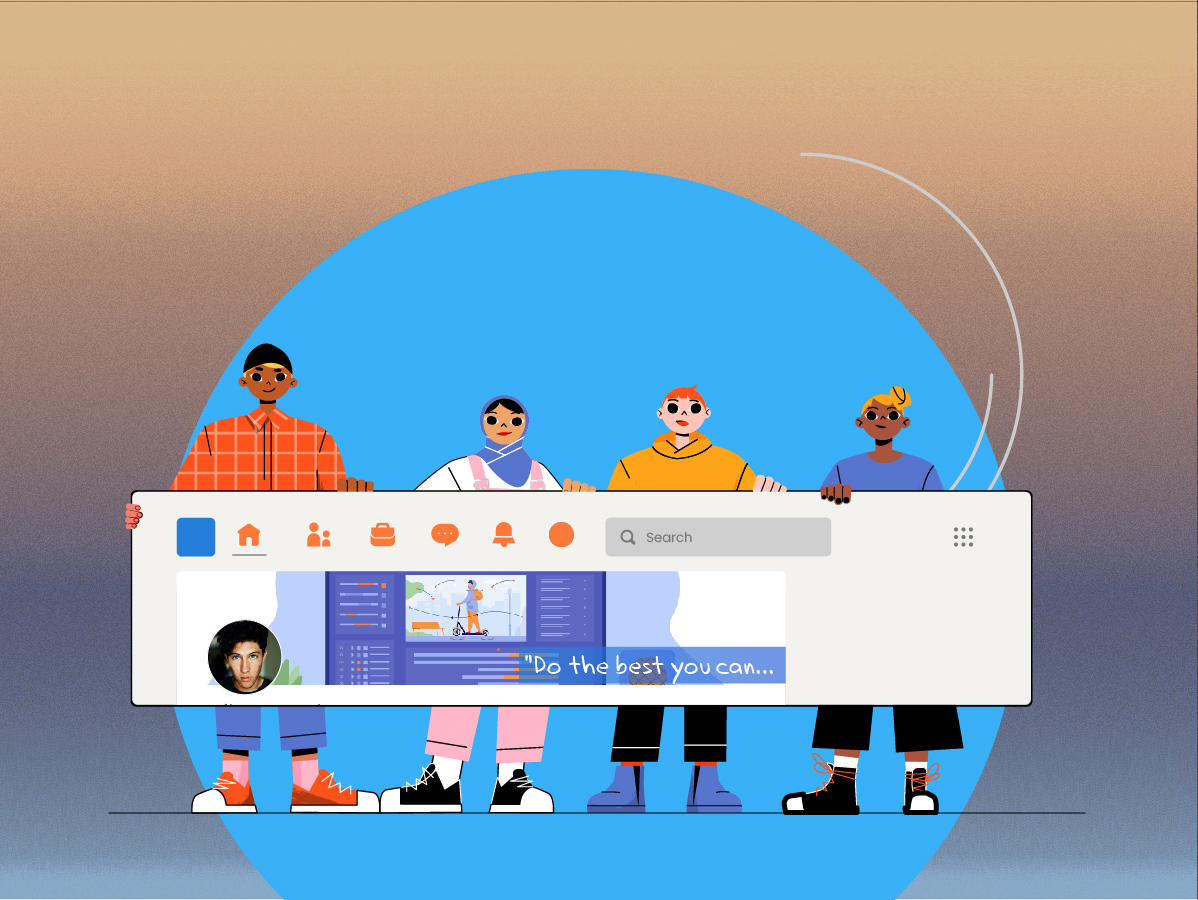Lead generation is crucial for every business. But traditional lead generation tactics, such as cold calling and email blasts, can be time-consuming, expensive, and often result in low conversion rates. That’s where inbound lead generation comes in.
Inbound lead generation focuses on attracting potential customers to your business by providing them with valuable information, rather than pushing your product or service on them.
In this blog post, we’ll walk you through the basics of inbound lead generation and provide tips for how you can implement it in your business.
1. Understand the buyer’s journey
To effectively implement inbound lead generation, it’s important to understand the buyer’s journey.
The buyer’s journey is the journey that customers go through before buying a product or service from a business. When you’ll understand the different stages of the buyer’s journey, you’ll be able to speak to leads where they are at and convert them to paying customers.
The customer’s journey comprises three stages. These are awareness, consideration, and decision.
Let’s understand these stages in more detail.
Awareness stage
The awareness stage is the first step in the journey. It involves making the prospect aware of their problems and needs. This is the stage where they are just beginning to research and understand their problem. They may be searching on Google or social media, reading blog posts or watching videos to educate themselves on their problem.
At this stage, your goal is to create content that helps the potential customer identify and understand their problem. You can create educational blog posts, videos or social media posts to inform and educate prospects about their problems.
Consideration stage
This is the second stage of the buyer’s journey. The prospect is aware of their problem and is considering possible solutions. They are evaluating their options and looking for businesses or products that can help solve their problem.
At this stage, your goal is to provide content that helps the potential customer evaluate their options and make an informed decision. This could include product comparisons, case studies, or customer reviews.
Decision stage
During the decision stage, the potential customer has decided on a solution and is ready to make a purchase. They are evaluating different businesses or products and making a final decision.
At this stage, your goal is to provide content that helps the potential customer make their final decision. This could include free trials, demos, or consultations.
2. Create a lead magnet
Lead magnet is content offered to leads in exchange of their contact information. They can range from an ebook to a whitepaper. The key is to create something that is valuable and relevant to your potential customers.
Creating a lead magnet is an important part of your inbound lead generation strategy because it allows you to capture the contact information of potential customers and continue to nurture them through the buyer’s journey.
Make sure to create a lead magnet that is valuable and helps the prospect move to the next step of the buyer’s journey.
Here are some tips for creating an effective lead magnet:
- Identify your audience’s pain points: What problems are your potential customers trying to solve? What questions do they have? By identifying their pain points, you can create a lead magnet that addresses those specific needs.
- Offer a quick win: Your lead magnet should provide a quick win or solution to your potential customer’s problem. This will help build trust and establish your authority in your industry.
- Keep it simple: Your lead magnet should be easy to understand and consume.
- Provide high-quality content: Your lead magnet should be well-written and designed, and should provide real value to your audience.
3. Optimize your website for inbound lead generation
Your website is an important tool for inbound lead generation. It’s often the first point of contact that potential customers have with your business, so it’s important to make a good first impression. Here are some tips for optimizing your website for lead generation:
- Make it easy to contact you: Make sure your contact information is easy to find on your website.
- Use clear and concise language: Make sure your website copy is easy to understand and speaks directly to your potential customers.
- Make landing pages: Landing pages are standalone pages that provide some value in exchange of contact information.
- Use analytics to track your results: Use tools like Google Analytics to track your website traffic and lead generation results. This will help you identify what’s working and what’s not, so you can continually improve your strategy.
4. Leverage social media for inbound lead generation
Social media is a powerful tool for lead generation, allowing businesses to connect with potential customers and build relationships with their audience.
Listed below are some tips to help you get started:
Choose the right social media platforms
Not all social media platforms are created equal when it comes to lead generation. It’s important to choose the platforms that are most likely to reach your target audience. For example, if your business caters to a younger demographic, Instagram and TikTok may be the best platforms to focus on, while LinkedIn may be more effective for B2B businesses.
Create a social media strategy for inbound lead generation
To effectively generate leads on social media, you need a well-planned strategy. Here are some tips:
- Set clear goals: What do you want to achieve with your social media lead generation efforts?
- Identify your target audience: Who are you trying to reach with your social media content? What are their needs, interests, and pain points?
- Create a content plan: What types of content will you create? How often will you post, and on which platforms?
- Engage with your audience: How will you respond to comments, messages, and other interactions with your audience? Will you use chatbots or respond manually?
Tips for engaging your audience on social media
Here are some tips for engaging your audience on social media and generating leads:
- Use visuals: Visual content like images and videos tends to perform better on social media than text-only content.
- Offer value: Provide your audience with valuable content that solves their problems and addresses their needs.
- Use calls-to-action: Encourage your audience to take action, whether that’s clicking through to your website, downloading a lead magnet, or contacting you for more information.
- Build relationships: Respond to comments and messages, ask questions, and engage in conversations with your audience. This can help build trust and establish relationships that can lead to conversions.
By effectively using social media for lead generation and engaging with your audience, you can build a loyal following of potential customers and ultimately grow your business.
5. Nurture your leads
Lead nurturing is the process of preparing leads to become customers through building trust and relationship with them. By providing valuable content and guidance throughout the buyer’s journey, businesses can increase the likelihood that leads will ultimately make a purchase.
Strategies for lead nurturing
Here are some strategies businesses can use for effective lead nurturing:
- Personalization: Use data and analytics to personalize your communication with leads. Address them by name, reference their specific needs and pain points, and tailor your messaging to their stage in the buyer’s journey.
- Content marketing: 76% of marketers use content to generate inbound leads. So, use content marketing to provide leads with valuable information and resources that help guide them through the buying process.
- Email marketing: Email marketing is a must-have tool for nurturing leads. Use automated email sequences to send leads relevant content and information based on their interests and behaviors.
Tips for effective lead nurturing emails
Here are some tips for creating effective lead nurturing emails:
- Keep it relevant: Make sure the content of your emails is relevant to the lead’s needs and interests.
- Use a succinct subject line: It is the most significant part of an email as it decides whether the reader will open the email or not. So, write a clear and simple subject line that clearly outlines the email.
- Use a conversational tone: Write your emails in a conversational tone to make them more engaging and relatable.
- Provide value: Make sure each email provides value to the lead in the form of information, resources, or guidance.
By implementing these lead nurturing strategies and tips, businesses can build relationships with potential customers and guide them through the buyer’s journey towards making a purchase.
Key Takeaways
In conclusion, inbound lead generation is a critical aspect of modern marketing that can help businesses of all sizes attract, engage, and convert potential customers. By creating valuable content, optimizing your website for search engines, leveraging social media, and nurturing leads through personalized communication, businesses can build trust, establish authority, and drive growth.
Ultimately, inbound lead generation is not a one-time effort, but a continuous process of attracting, engaging, and nurturing potential customers. By focusing on creating value for your audience and building relationships, you can establish a strong foundation for long-term business growth.
So, take the time to develop a comprehensive inbound lead generation strategy, measure your results, and refine your approach to achieve your business goals. Also, use expandi a LinkedIn automation tool to automate repetitive and manual tasks. The tool lets users run smart sequences based on the following actions: connection requests, follow-up messages, follow, messages, skill endorsements, profile views, and reactions on posts. Try expandi for free today!
Your Next Read:








